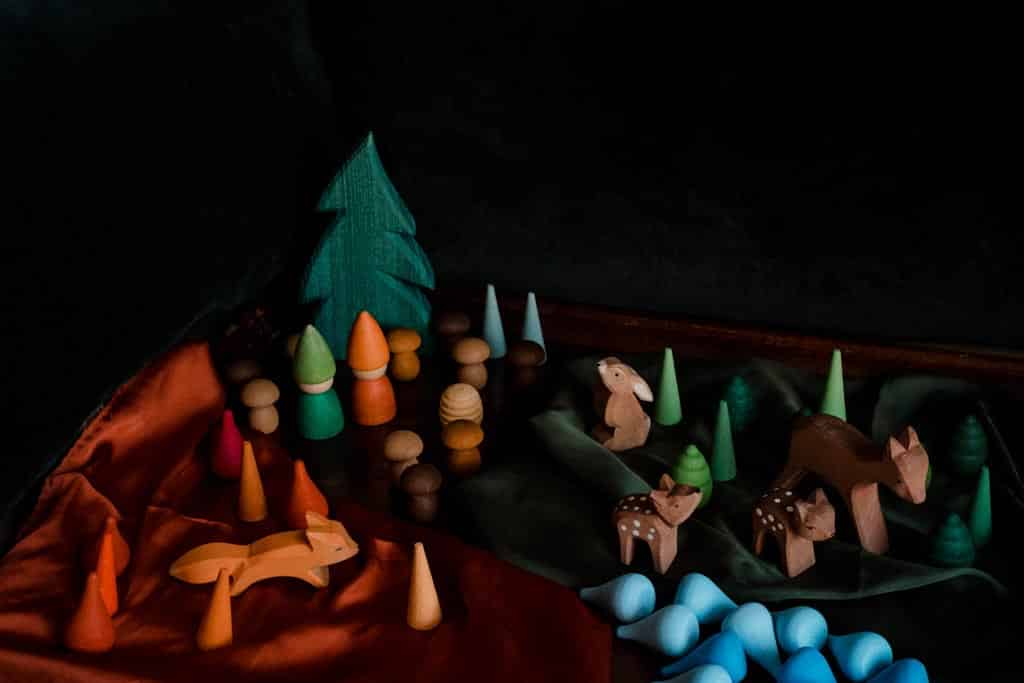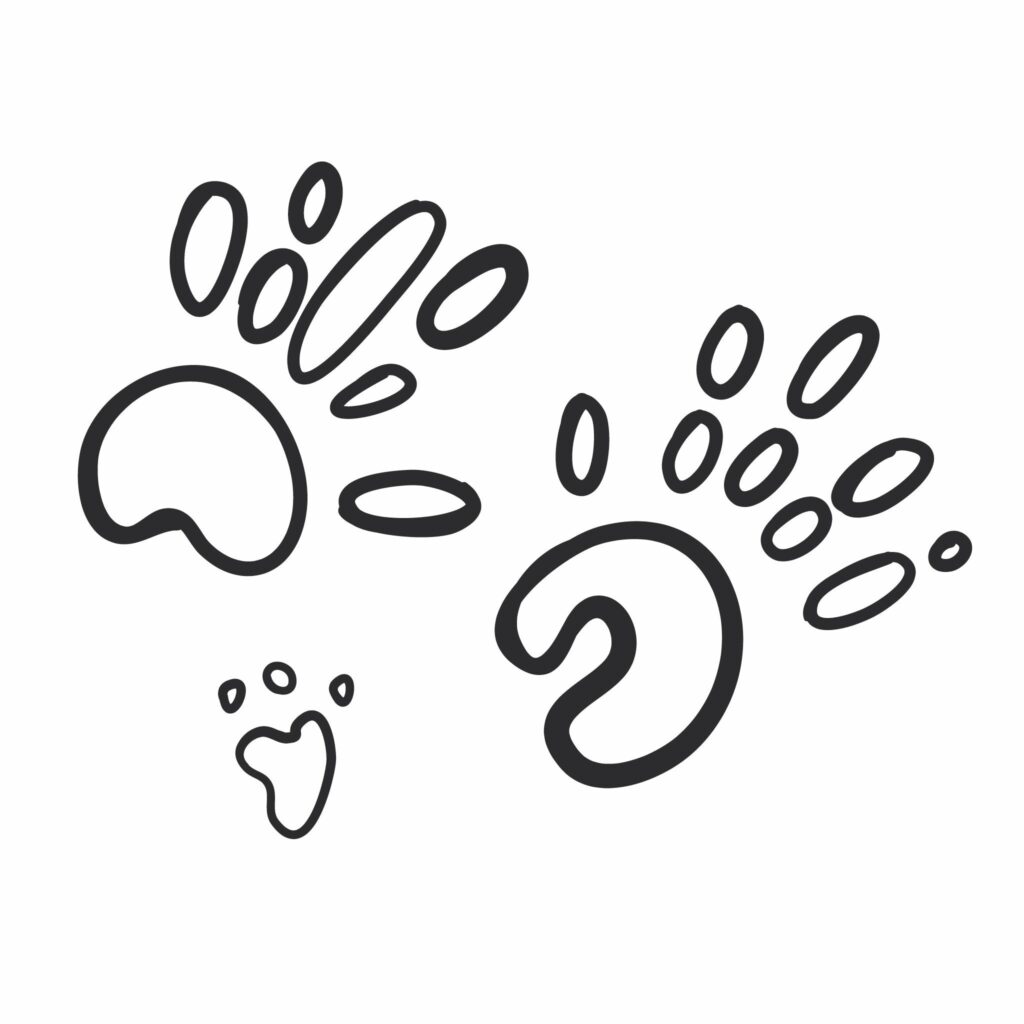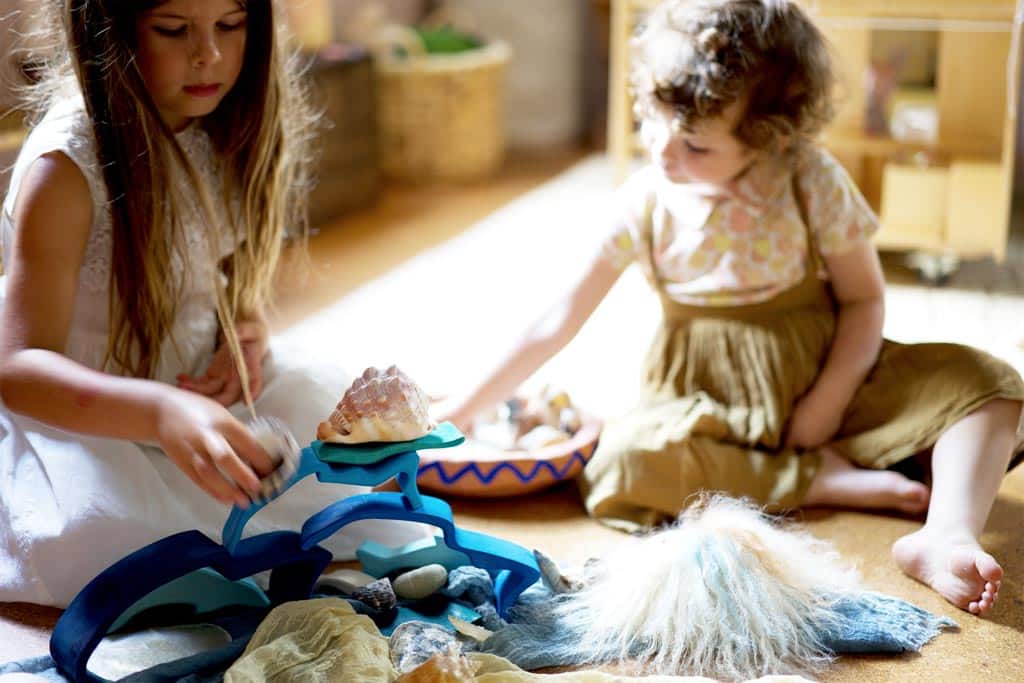Have you heard of small world play? In this type of play, children can build, create and imagine, all in a small, safe and manageable ‘world’ of their own making. It’s imaginative play, only it’s more contained, often in a space that your child can return to again and again.

What is small world play?
Small world-play is a way of creating (and recreating) scenes and settings, both real-life and imaginary, in child-size proportions. Like its close ally imaginative play, small world play allows children to explore and consolidate things they experience and learn in real life, and to see the world from the perspective of others. But unlike imaginative play, small worlds are, as the name suggests, smaller and more contained, often with clear boundaries between where the play ends and the rest of the world begins. Doll’s houses, play farms and other settings inspired by the real world are classic examples of small world toys. But children can just as easily make their own small worlds in places of their own devising; a shoe box, on a Lego base, under a table or in a quiet corner of a room. There are no rules.

The benefits of small world play
You’ll notice that small world play is especially popular with toddlers and younger pre-schoolers. This is because it’s a great way to explore and expand on the language skills they are acquiring so rapidly at around 18-24 months. Listen to your child as they play with their small world and you’ll probably hear a constant narrative as they act out the very exciting events that are taking place in their small world setting. So if you are trying to help a child with sounds and words, encouraging small world play will reap rewards.
Toddlers prefer to play by themselves, engrossed in their own plots and explorations but as the grow, children start to play alongside each other and eventually collaboratively. Nowhere is this more evident than with small world play, where preschoolers will happily co-create scenes and stories, learning to share and consider others as they go.

Resources for small world play
You don’t need any special resources for small world play! The chair legs under the kitchen table can be the trees of a forest, the flowerbed a jungle full of tigers and parrots. Having said that, a small box of props can come in handy as it enables children to rapidly realise their vision.
- Cardboard boxes and tubes: raid the recycyling box for ready-made buildings, mountains and tunnels.
- Cotton wool: makes excellent snow, clouds and sheep
Best of all, take the play outside
- Sand: for deserts and underwater supermarkets (where mermaids shop). Read more about sand and water play.
- Stones and sticks: for mountains, forests and distant planets
What are the best small world toys?
Here are some suggestions for your small world toybox:
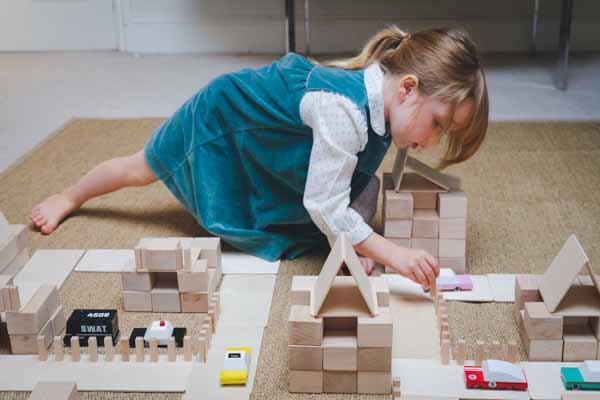
Wooden blocks
Blocks are open-ended and can become anything you want them to be; a school one day and a castle the next. The classic, unpainted block is perfect in this role, providing a blank canvas for your creations. The pieces recede into the background, leaving space for your figures to act out the story. Alternatively, choose colourful blocks to add a touch of fantasy to the scene.
Playsilks
You might use playsilks already in dressing-up games but have you considered using them in small world play? Blue silks make wonderful skies and rivers, green for grass, red for fire and so on.
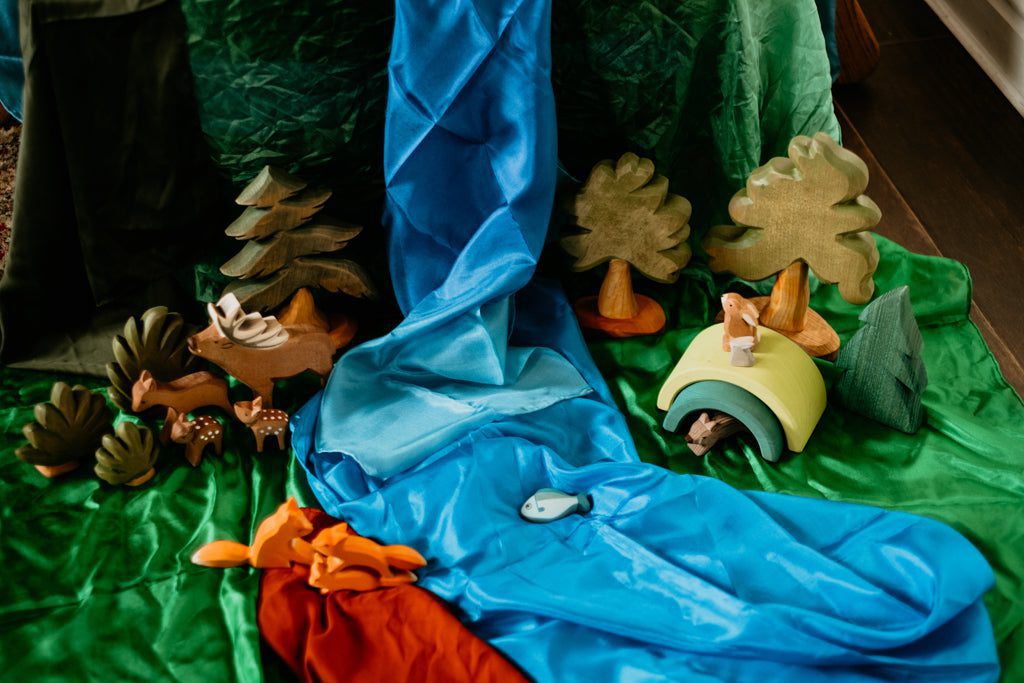
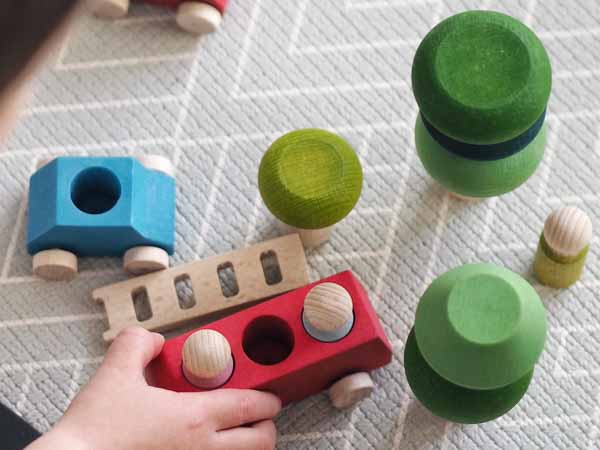
Vehicles
So that the good people of your small world can get around.
Read more about why toddlers can become obsessed with cars.
Wooden people
Ostheimer people and animals come in lovely natural poses but you can use any figures.
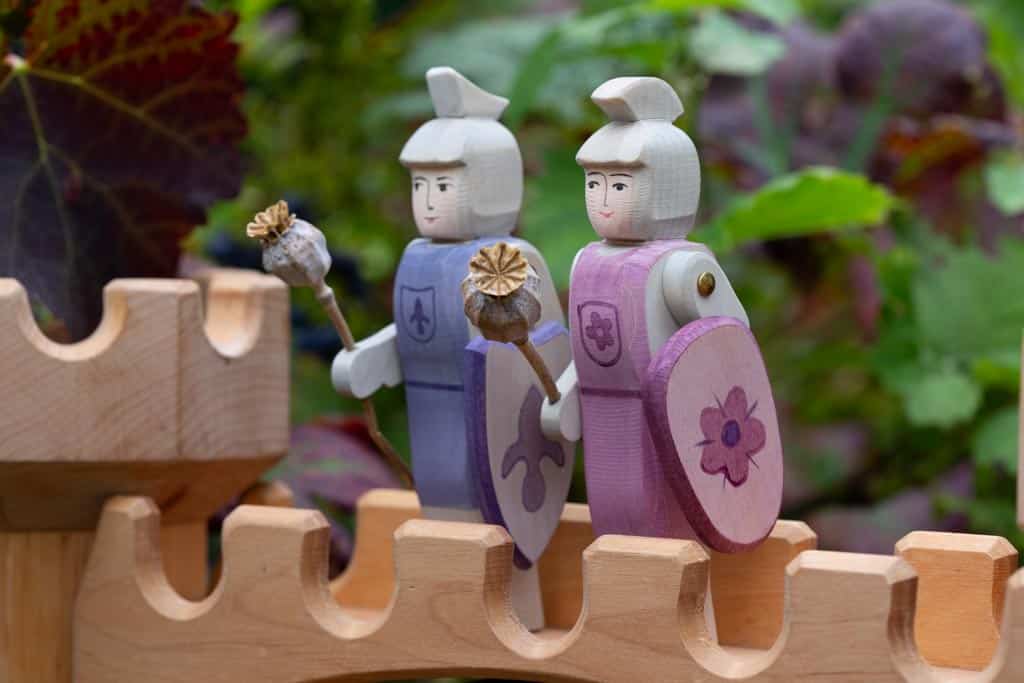
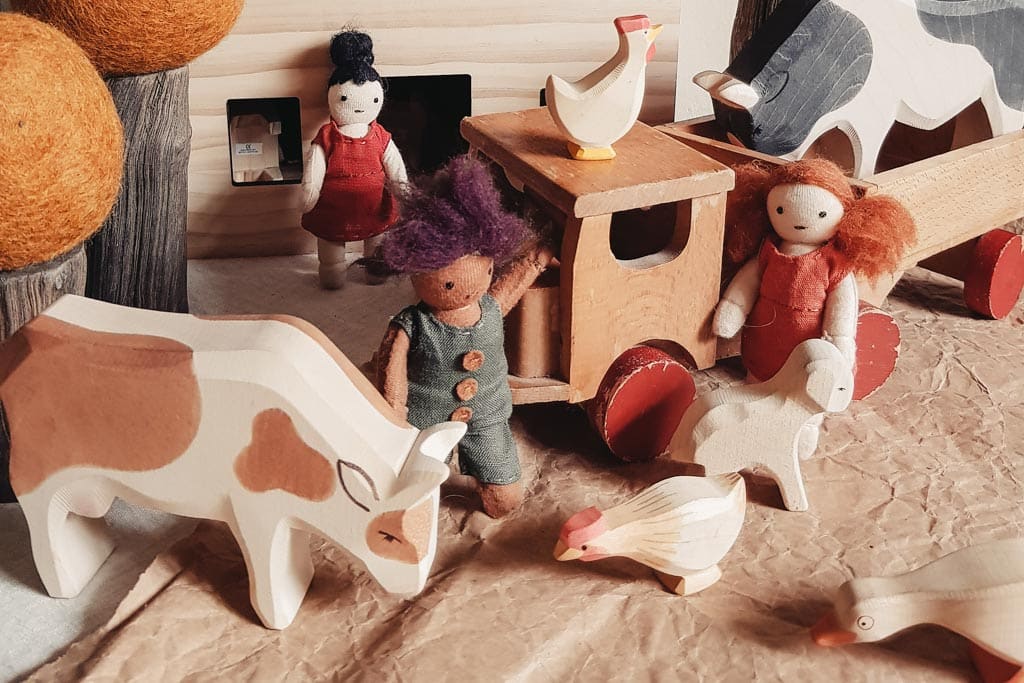
Wooden trees
It’s surprising how greenery brings a small world to life. For a softer, quirkier look, felt trees add a touch of magic.
Nested toys
Nested toys such as the Grimm’s Rainbow, which can be a tunnel, a cave or a row of houses.
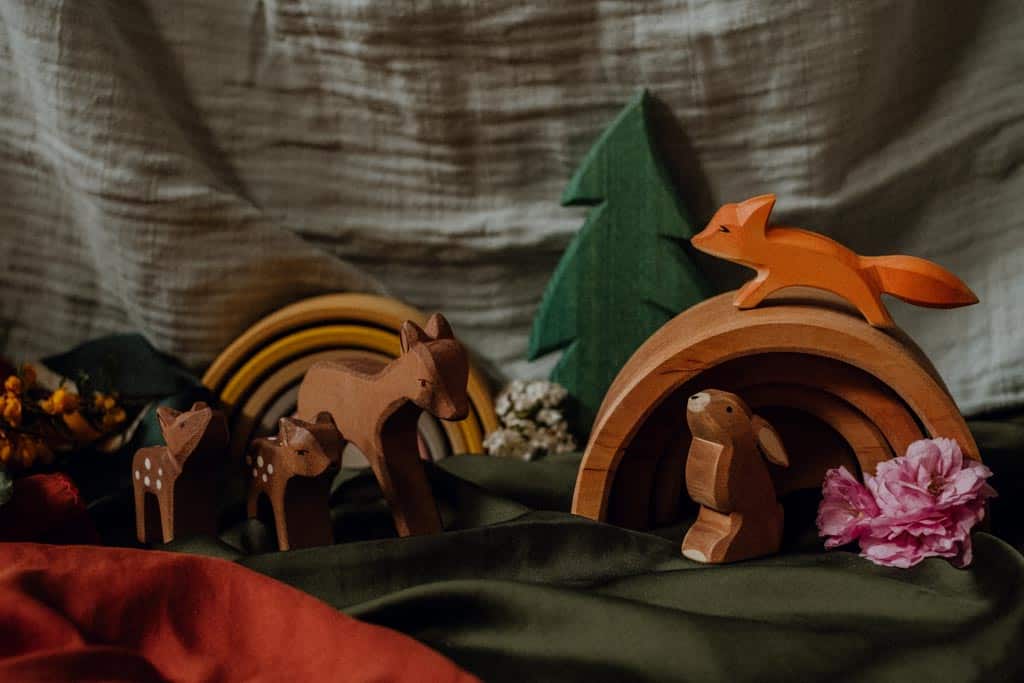
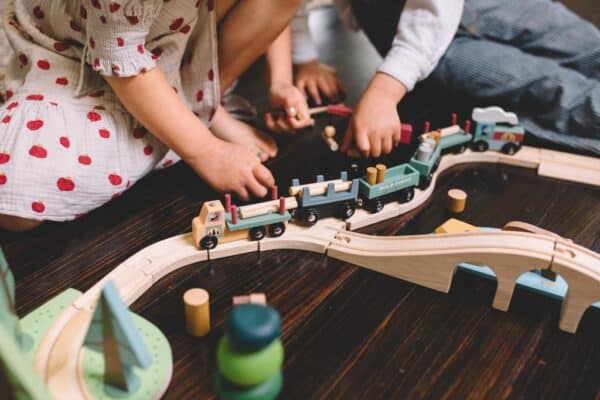
Wooden train set
Have you read Richard Scarry’s books? What do people do all day? is packed full of all the fascinating (to a child) things that adults do when they go to work. What better small world scene can you think of than a little town filled with trucks, buildings and railways full of busy people going about their day?
Small world tip: When choosing what resources to keep in your small world box, favour those that encourage dialogue. A train set is brilliant fun and great for small world play but played with on its own, most children will make a choo choo sound and push it round the track. But add some passengers and a driver and suddenly there is a reason to talk, to narrate a story and imagine possible events.

Small world play ideas
Choose your subject
Big or small, real or fantastic, it’s up to you. The idea is to create a meaningful context in which to identify certain words and phrases. Choosing something your child is already familiar with is a good idea, so that they can build on what they already know and feel confident. Zoos and farms are always good as most children love animals and know of some already through family pets or trips. As children get older, the settings can become more imaginative. Space stations are incomprehensible to a toddler but a five-year-old can draw upon all kinds of stories and television programmes as reference points to anchor the play.
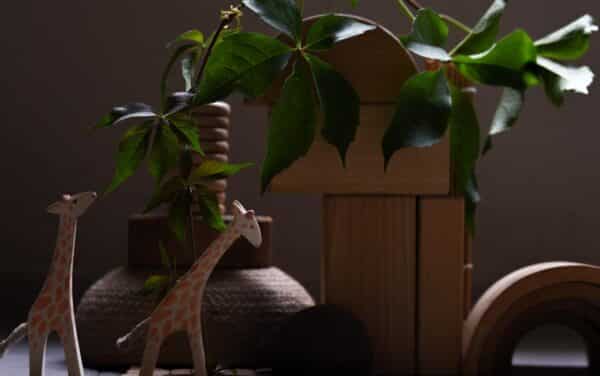
Jungle
Jungle adventure: Set up a jungle scene using houseplants, toy animals, and green fabric. Create paths with wooden blocks or sticks for the explorers to navigate.
Diorama
Buy or make a folding screen decorated with the background of your choice. It’s ready to go whenever you want to play.
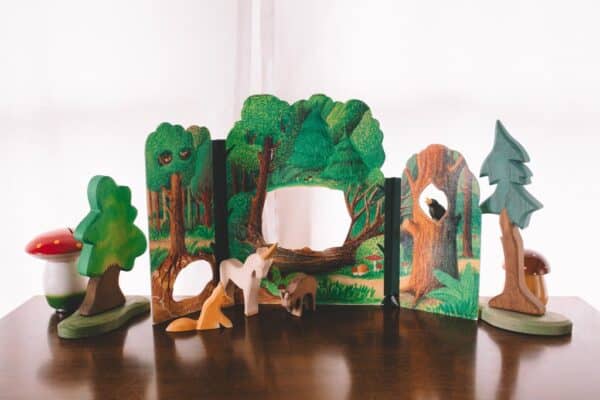
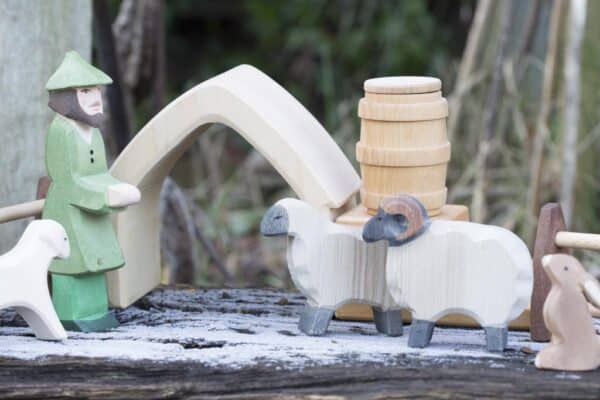
Farmyard
How many stories can you think of set on a farm? Too many to list? The reason is simple: all of life happens on a farm. There are heroes and villains, triumphs and disasters. An enclosure, a farmer and some animals. That’s all you need for a childhood’s worth of adventure.
And here are a few more ideas:
- Construction Site. Use blocks, toy vehicles, and small construction figures to create a construction site. Add household items like cardboard tubes or empty containers as building materials.
- Beach. Fill a shallow tray with sand or rice and add seashells, small plastic sea animals, and toy palm trees. Create a beach scene using towels or blue fabric for water.
- Shoebox town. Arrange various boxes on a table or the floor and fill with doll’s house furniture or DIY equivalents like matchboxes and cotton reels. Cut doors and windows for the townsfolk to use and mark out roads with masking tape. Populate with peg people or small wooden dolls.
- Dinosaur world. Use rocks, leaves, and small plants to create a prehistoric landscape. Make a volcano. Add bicarbonate of soda and vinegar mixed with a little orange food dye and watch it erupt!
- Fairy garden: Arrange small plants, flowers, and pebbles on a tray or in a shallow dish. Add fairy figurines and small decorative items like gemstones or shells.
- Arctic expedition. Create an arctic scene using a tray with crushed ice or cotton balls. Place toy polar bears, penguins, and seals on the “ice” and add blue fabric as water.
- Read more: 33 simple small world ideas.
Keep it simple
Whatever scene you’re creating, try to limit it to just one space and around two or three characters or animals. Too much going on will dazzle them. Concentrate instead on finding a good mix of materials and textures, especially natural ones. For example you might create an underwater scene in a shoe box, with sand for the sea-bed, a natural sponge and a few shells.

Try a doll’s house
While it’s not as open-ended as wooden blocks, a doll’s house is a toy for small world play they will return to over and over. And, if you’ve already got a doll’s house, you’ll know that boys love to play with them as much as girls.
The best doll’s house doesn’t need to be an elaborate Victorian mansion or a glitzy show-home and you can find many gender-neutral doll’s houses and modern, Scandi-style play houses that are pared-back enough to allow flexibility. A simple wooden structure with rooms can be a palace or a factory.
When they play with figures and props in this setting, children often recreate scenes from everyday life. Even when the play is about fictional characters, it’s almost always – on a subconscious level, at least – about the child’s own experiences. Observing doll’s house play allows you to see what your child understands of power dynamics and gender. Who takes out the bins? Who does the cooking? Whose house is it? It’s also a chance for children to enjoy role-playing situations not normally open to them: answering the door to the postman (or a tiger!); going to work; cooking dinner.
A doll’s house also has the benefit of being self-contained, so children can leave their game and go to school or have dinner, and pick it up again later on, extending their imaginative narratives and the possibilities that come with them. As an added bonus, it’s a great place to store all those dolls.

Use Pinterest for inspiration
Pinterest is a great place to look for small world ideas if you’re new to the concept. But don’t go overboard. Here at 100 Toys, Pinterest is our sworn enemy. The activities look nice – and can form a brilliant jumping-off point (what’s known as an ‘invitation to play’) – but how much of the set-up was your child’s idea and how involved was she in making it? If the answer is ‘not much’, then think again. Your creation may be a big hit (which is brilliant, but it still took you too long to make to be sustainable on a daily basis) or it isn’t, in which case it will be ignored, subverted or swept away. Was it worth the effort?
By all means make something collaboratively with your child, but do so at their instigation and let them guide the play. See this post about sustained shared thinking for how we can work alongside children to help them explore and expand their ideas.
Final word
Small world play comes naturally to children. Whether you give them an elaborate doll’s house or leave them to make their own fun in the garden with sticks and stones, they will instinctively create scenes and stories. All you have to do is allow the time and space for small world play to flourish. A box of useful resources will help, but it’s not strictly necessary. If you do buy toys, a handful of figures is a great place to start.

